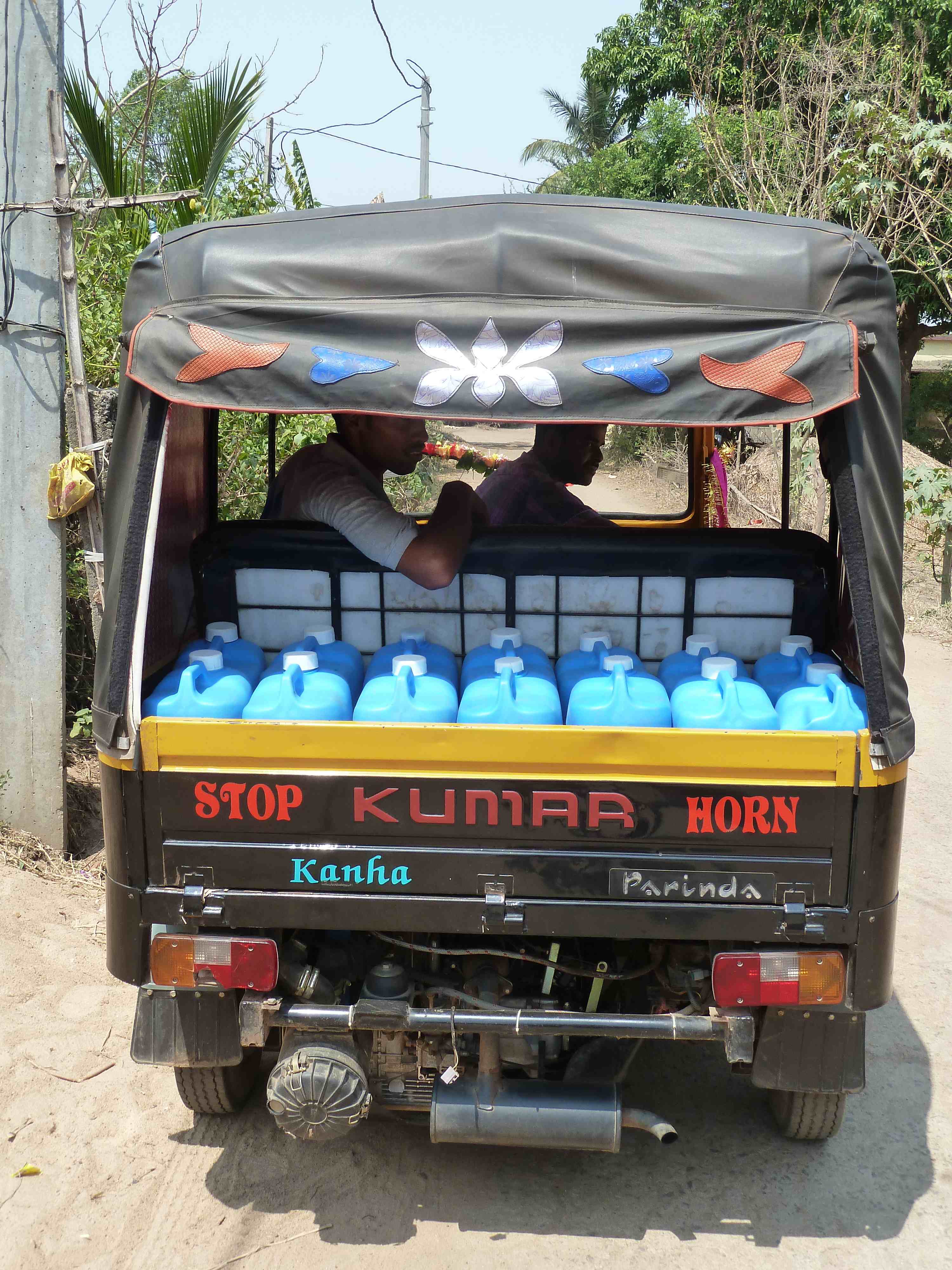Executive Summary
This case study supports and illustrates the theoretic factsheet "Value creation" with practical insights.
Efficiency through clear processes – Insights from Spring Health’s kiosk model in India
Spring Health is the first of three divisions of Windhorse International, a for-profit social venture firm founded in 2008 by social innovator Paul Polak to bring low-cost and innovative products to millions of people living on less than USD 2 per day. Spring Health’s central mission is to provide “safe and affordable drinking water to one and all.” The long-term goal is to bring this service to 20,000 villages across India and reach 2 million customers. Currently Spring Health is active in rural communities in the state of Odisha, India, indicated with the red arrow in the map below. Across Odisha, including the districts with Spring Health operations, the percentage of people with access to an improved drinking water source varies dramatically between 25% and over 75% (GOVERNMENT OF ODISHA, 2011, p. 276). To counteract these conditions Spring Health developed a network of water kiosks, based on a micro-entrepreneur sales model to offer daily delivery of 10 litre jerry cans of safe drinking water to local households. On the one hand are the jerry cans directly delivered to people’s doorstep and on the other are people able to purchase water directly at the kiosks.
Source: Wikimedia Commons, 2018
Over the years Spring Health began to grow, adding both new structures and processes to the company. Thus, it began mapping out its business structure and specific key processes. Spring Health developed a decentralised (hub and spoke) organizational model to oversee its large rural network (see Graph below). The operations are divided into units of 50 villages, each of which has a chlorine production site (electro-chlorination point) and is overseen by a sales manager. Within this unit of 50 villages, the sales manager oversees 5-10 sales executives who are responsible for ensuring the operations of up to 10 villages each. In turn each village has a business associate (the franchisee) who provides the water source, oversees delivery, collects payment and aids in sales. Spring Health ensures an enduring presence in every village. First, the business associate who owns the well, hosts the filtration system and ensures water delivery is someone from that village that has been deemed responsible and influential by the scout team. Second, the sales executive in charge of multiple villages visits each business associate once every two days to deliver chlorine, disinfect the water and gather usage and quality data. The day-to-day operations of providing Spring Health water are ensured by the business associates, the delivery person and the sales executives. The rest of the business is broken up into the scout team (to identify opportunities for expansion), the build team (to construct new water kiosks), the marketing team (to drive sales and social marketing) and human resources / accounting.
This clear structure has not been in place since the establishment of the enterprise. After losing every month high sums of money, Spring Health decided to take some measures to identify bottlenecks of the business and increase value creation within the company through clearly structuring its activities. This allowed the venture to reflect on organigram and spoke structure (visualised in both graphs). The output allowed the organization to also develop training materials for new people and replicate optimised processes in all villages present and across employee levels.
Additional measures of reducing costs and streamlining business activities were:
- Increase of responsibility of sales executives from 4 villages to 8-10 villages.
- Use of 3,000 L tanks instead of 1,000 L tanks to decrease the number of visits the sales executive has to make to each business partner for disinfecting the water tank.
- Encouraging business partners to increase their marketing activities should increase sales in their respective villages without hiring more staff.
- Outsourcing human resources administration as it was too costly to be done in-house.
Lessons learnt of Spring Health’s value creation
- The problem identification process clearly revealed that much of the value created within the company was not efficient and had to be increased through lowering costs, increased tasks of staff and outsourcing of certain activities (sales process and accounting).
- The clear cost allocation per process facilitates further roll outs of kiosks to new villages. Experience has shown that depending on the preconditions of wells and infrastructure given in a specific village, the costs are not always equal for installing a new kiosk. Nevertheless are the roll-out processes facilitated and costs can be more precisely estimated due to the improved processes.
- Through the mapping and structuring of Spring Health’s processes clear job descriptions could be developed. The procedure revealed what skill profiles are mostly suitable for which activity in the company and helped developing training manuals for the respective positions. With this knowledge new employees can be trained effectively and become productive within a shorter period of time.
- The process mapping further facilitated the organization of the company and helped identifying bottlenecks within processes to accordingly optimize them.

Recommendations for replicating Spring Health’s process mapping approach
- To thoroughly analyse the status of value created within a company, process mapping paired with a holistic cost analyses will help and serves to improve value creation of a safe water initiative.
- Clear structuring and mapping of your organizations processes and activities helps to improve efficiency and is highly recommended to pursue from the establishment of an enterprise onwards.
- With growing experiences the processes and structures can be adapted to lessons learned and help improve the efficiency of your company’s activities.
- Be aware that mapping and defining structure and job profiles of your company will take some time. It will though facilitate the integration and efficiency of work when new staff is hired as tasks are defined and documented.


